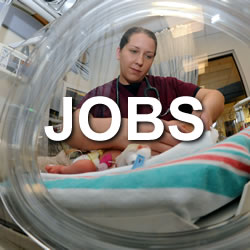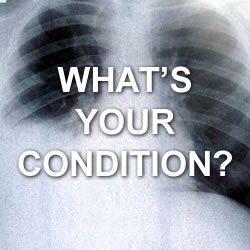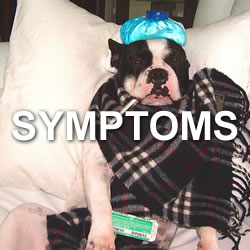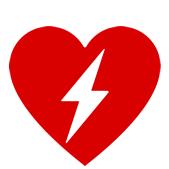Blood
There is no caste in blood - Edwin Arnold
.jpg)
image by: Cells at Work
HWN Suggests
Young blood: magic or medicine?
Ben Franklin famously wrote that “in this world, nothing can be said to be certain, except death and taxes”. What he didn’t mention, despite being 83 years old, was a third, almost inevitable eventuality: ageing.
Depending on when in history and where on the planet you look, ageing is variously considered desirable – bringing with it wisdom and status – or as something to be feared, eliminated, or at least delayed as long as possible.
In the 16th to 18th centuries, Western societies believed old age was a time of considerable worth. But since the 19th century we have sought ways to eliminate or minimise the effects of ageing.
Even…
Resources
 Seven things you might not know about blood
Seven things you might not know about blood
Blood is fascinating. Many people learn at school that its function is to transport oxygen and nutrients around the body and remove waste products. But blood has many more functions, including defence against pathogens, regulating our temperature, and keeping important internal chemicals and nutrients balanced. Here are some other things you might not know about blood.
 Essays on blood: why do we actually have it?
Essays on blood: why do we actually have it?
Red cells are specialised parcels, lacking DNA, that are able to squeeze through the tiniest capillaries, down to four millionths of a meter (equivalent to roughly half their diameter). Their donut shape maximises their surface area to make sure they can efficiently deliver oxygen, while keeping them small enough to fit through the smallest blood vessels. As well as red cells, our blood contains other cells and chemicals that repair and maintain the transport system and send signals around the body.
 Ghana’s new lifesaving drones: like Uber, but for blood
Ghana’s new lifesaving drones: like Uber, but for blood
They’re helping sick people in emergencies. But some think they’re a $12 million mistake.
 Her Blood Turned Blue, How It Happened
Her Blood Turned Blue, How It Happened
There are “blue bloods,” as in aristocrats or people who are socially prominent. There is Blue Bloods, the television series. Then, there’s the woman who actually had blue blood, as described in a case report in the New England Journal of Medicine.
 How Russia Fell in Love with Candy Bars Made of Blood
How Russia Fell in Love with Candy Bars Made of Blood
Many Soviet children grew up loving the sweetness, texture, and slight metallic twang of Hematogen bars—without knowing what was in them.
 How to know if your heavy period is a sign of a bleeding disorder
How to know if your heavy period is a sign of a bleeding disorder
About 30 percent of all women report heavy menstrual periods at some point during their reproductive years. Up to 15 percent of these have an underlying bleeding disorder and yet most have never been diagnosed, leaving thousands of women to suffer from a treatable problem.
 Platelets: The chameleons of cancer biology
Platelets: The chameleons of cancer biology
New information has enabled researchers like myself to reevaluate our understanding of the role of platelets in cancer. Until recently, relatively few studies have observed a protective role of platelets in cancer. While there is substantial evidence linking intact platelets to promoting cancer, the dual pro- and anti-cancerous roles of platelets raise some fascinating questions about both intact platelets and the microparticles that they release.
 Searching in vein: a history of artificial blood
Searching in vein: a history of artificial blood
For centuries scientists have sought an artificial substitute for blood. Equipped with modern nanotechnology and a humbler strategy, bioengineers think they’re closer than ever.
 The Intersection of Race and Blood
The Intersection of Race and Blood
Blood can be racially or ethnically specific, so having more blood donors in certain groups can be crucial for saving the lives of patients who share their backgrounds.
America Is Selling Blood for Big Profits to the Rest of the World
It's the most primordial substance there is, so maybe it was inevitable that it would become a commodity more valuable than oil.
Bill Gates on How Blood Will Soon Tell Us Everything
Cheap, easy tests will replace expensive medical screenings and make health care more accessible for people everywhere.
Essays on blood: why do we actually have it?
Just as a village can’t grow into a city without some form of transport (road, rail or river) that provides necessary interconnections for it to flourish, living things are limited in the size they can reach unless they have some form of circulatory system to transport nutrients and remove waste.
What can go wrong in the blood? A brief overview of bleeding, clotting and cancer
While blood is essential for human life, there are many things that can go wrong. And as it travels around the body and flows through every organ, problems in the blood can have wide-ranging implications for our health. There are countless problems that can occur in this vital fluid; here, we’ll have a look at the most common - bleeding disorders, clotting disorders and blood cancers.
Artificial Platelets Could Stop Battlefield Bleeding, Scientists Say
Scientists have made a new biomaterial that mimics the function of platelets, components of blood that help with clotting, or sealing, a wound.
Bleeding Disorders in Women
Heavy bleeding is one of the most common problems women report to their doctors...
Blood Diseases Could Show Crispr's Potential as Therapy
But until we hit that deal breaker, a future where people suffering from genetic blood disorders will soon have their pesky mutations Crispr’d out of their DNA for good is coming into clearer view.
Blood Donations, Sexual Orientation, and Societal Health
The FDA is considering lifting restrictions on blood donation based on sexual orientation. If they do, increasing the blood supply will be only the most straightforward benefit.
Blood, Bones And Bacteria: The Next Generation Of 'Smart' And Sustainable Materials?
The core material in Grouin-Rigaux’s products is a bone or skin glue, which is created by prolonged boiling of animal connective tissues which contain collagen fibers. This glue is then colored with either “blood powder” or “bone char” pigment.
California decided it was tired of women bleeding to death in childbirth
The maternal mortality rate in the state is a third of the American average. Here's why.
Can Black Soybeans Improve Blood Disorders?
In traditional Chinese medicine several “black foods” are believed to be a good source of nutrients and beneficial for blood production. A recent paper in the British Journal of Nutrition have evaluated several “black foods” and have found that black soybeans (Glycine max) affect a key regulator in iron metabolism and may be beneficial for certain types of blood disorders.
From animal experiments to saving lives: a history of blood transfusions
Here we look at how blood transfusions started as an experiment four centuries ago, and became a modern-day life saver.
I’ve always wondered: why do our veins look blue when our blood is red?
Blood is red, and a surgeon will tell you our veins too are red, they only look blue when we see them through our skin. But why? The answer depends on a number of things, including how your eyes perceive colour, how light behaves when it contacts your body, and the special properties of blood.
Scientists Confirm Vampires Were Onto Something
New research published this week by two teams of scientists confirmed what Bram Stoker and countless philosophers, scientists, and cannibals have long posited — there’s an indisputable relationship between blood and aging.
Spilling blood in art, a tale of tampons, Trump and taboos
When blood escapes the body or laboratory, it is particularly disturbing and unruly. We speak of spilt blood as contaminated, infected, impure. Controlled blood-letting is a symbol of masculinity; menstruation a sign of abjection, and gay men’s blood is to be feared, to say nothing of the anxiety of intermingling blood between people, races and species. To work with blood can raise ethical issues, but is equally an opportunity to shed light on the source of many prejudices and misconceptions.
The Rising Risk of a Contaminated Blood Supply
Amid new pathogens and cost pressures, efforts are under way to keep patients safe.
The Twisted Business of Donating Plasma
Since 2008, plasma pharmaceuticals have leapt from $4 billion to a more than $11 billion annual market. Donors desperate for the cash incentive from high-frequency "plassing" may be putting their health, and the public's, at risk.
What Is the Blood of a Poor Person Worth?
Desperate people can make $30 donating plasma, up to 104 times a year, in this $20 billion industry.
Why Do So Many Americans Think They Have Cherokee Blood?
The tradition of claiming a Cherokee ancestor continues into the present. Today, more Americans claim descent from at least one Cherokee ancestor than any other Native American group.
Why Do Some People Faint When They See Blood?
Getting dizzy and fainting at the sight of someone else's blood doesn't seem to be the most, uh, evolutionarily appropriate response. How's that going to help you when you're trying to take down a buffalo? And despite it being relatively common--3 to 4 percent of people suffer from blood phobia or a related disorder--the symptoms of it are totally different from most phobias: phobics' blood pressure and heart rate will rise then drop when they see blood, as opposed to the just-heart-racing caused by most fears. So what gives?
Why some animals have blue, green, or purple blood
Your blood is red. That's the case for most animals on Earth. But there are exceptions. Certain types of marine worms found in shallow ocean waters around the world have green and purple blood. And the common horseshoe crab has bright blue blood that gets harvested for bacterial-testing kits used by pharmaceutical companies.
Lab-grown blood could (one day, maybe) save your life
The quixotic, centuries-long search for blood alternatives is finally succeeding.
The Wonders of Blood
You’re born with a little over a pint of it, by adulthood you’re up to four or five quarts, and if at any point you suddenly shed more than a third of your share, you must either get a transfusion or prepare to meet your mortician.
 Young blood: magic or medicine?
Young blood: magic or medicine?
Blood is a potent symbol of life and of death. It is hardly surprising, then, that this incredible fluid is linked to the search for eternal youth in literature, legend, magic and medicine.
HemAware
The bleeding disorders magazine.
Blood
Blood is a weekly medical journal published by the American Society of Hematology. It was founded by Dr. William Dameshek, the researcher credited with describing the concept of myeloproliferative diseases and participating in the first studies of nitrogen mustard in various blood malignancies, in 1946, and has since been in continuous publication.
BloodBook.com
Our hope is, as you digest the information presented on BloodBook.com, that you become aware of the benefits of personal Blood testing, at least annually, if possible, and also that you consider autologous Blood donation and storage alternatives. Beyond that, we seek to present, in an easy-to-use format, useful and accurate facts about Blood, the Blood supply and closely related subjects.
Hematology.org
People may be affected by many different types of blood conditions and blood cancers. Common blood disorders include anemia, bleeding disorders such as hemophilia, blood clots, and blood cancers such as leukemia, lymphoma, and myeloma.
Hemoglobal
Hemoglobal® began on the island of Sri Lanka following years of work in research and care of children in thalassemia, which is the most common blood disorder in Asia. Governed by the conviction that country of birth or family income should not determine the life or death of a child, Dr. Nancy Olivieri and Professor David Weatherall founded Hemoglobal® to help provide children in Asia with improved care to preserve their lives, and quality of life.
OneBlood
OneBlood is a not-for-profit 501(c)(3) community asset responsible for providing safe, available and affordable blood to more than 200 hospital partners.
Bleeding Disorder Foundation of Washington
The Bleeding Disorder Foundation of Washington (BDFW) is a volunteer-based non-profit that gives a voice to those with a bleeding disorder, creates awareness of our cause statewide and influences those that can to support our cause.
Blood Clot Recovery Network
A community where survivors, recovering victims, families, friends, loved ones and advocates can come together to find encouragement, empowerment, enrichment and education to aid in the fight against not only the occurrence of blood clots, including Deep Vein Thrombosis (DVT) and Pulmonary Embolism (PE), but the devastating and far-reaching effects as well.
Iron Disorders Institute
Iron Disorders Institute’s vision is that no one should suffer or die prematurely because of Iron-Out-of-Balance™. IDI exists so that people with iron disorders receive early, accurate (complete) diagnosis, appropriate treatment and are equipped to live in good health.
National Heart, Lung, and Blood Institute
The National Heart, Lung, and Blood Institute (NHLBI) provides global leadership for a research, training, and education program to promote the prevention and treatment of heart, lung, and blood diseases and enhance the health of all individuals so that they can live longer and more fulfilling lives.
CDC
Blood disorders - such as sickle cell disease, anemia, and hemophilia - affect millions of people each year in the United States, cutting across the boundaries of age, race, sex, and socioeconomic status. Men, women, and children of all backgrounds live with the complications associated with these conditions, many of which are painful and potentially life-threatening.
Patient
Bleeding disorders are usually taken to mean coagulopathies with reduced clotting of the blood but also encompass disorders characterised by abnormal platelet function or blood vessel walls that result in increased bleeding. Bleeding disorders may result from faults at many different levels in the coagulation cascade. They can range from severe and life-threatening conditions, such as haemophilia A, to much more mild variants. Some bleeding symptoms (eg, bruising without obvious cause, nosebleeds and heavy menstrual bleeding) are quite common in the general population and there is phenotypic variation even among individuals with defined bleeding problems. Investigation of mild bleeding problems often fails to provide a diagnosis.
WomensHealth.gov
There are many kinds of bleeding disorders. The two most common are von Willebrand disease (VWD) and hemophilia.

Introducing Stitches!
Your Path to Meaningful Connections in the World of Health and Medicine
Connect, Collaborate, and Engage!
Coming Soon - Stitches, the innovative chat app from the creators of HWN. Join meaningful conversations on health and medical topics. Share text, images, and videos seamlessly. Connect directly within HWN's topic pages and articles.













